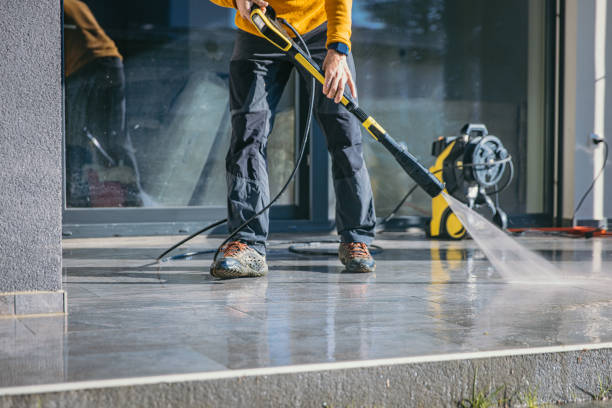Pressure washing, also known as power washing, is an effective method of cleaning surfaces by using high-pressure water spray. This technique is widely used in both residential and commercial settings for its efficiency in removing dirt, grime, mold, and other unwanted substances from various surfaces. In this article, we will explore the benefits, techniques, and tips for effective pressure washing.

What is Pressure Washing?
Pressure washing involves using survepesu a high-pressure water spray to clean surfaces. The equipment typically consists of a motor that drives a high-pressure pump, a hose, and a trigger gun-style switch. Water is forced through a small nozzle, creating a powerful stream capable of cleaning a variety of surfaces.
Benefits of Pressure Washing
- Effective Cleaning: Pressure washing can remove stubborn dirt, mold, mildew, algae, and even graffiti from surfaces.
- Time-Saving: Compared to traditional cleaning methods, pressure washing is much faster and more efficient.
- Prevents Damage: Regular pressure washing can prevent the build-up of harmful substances that could damage surfaces over time.
- Improves Curb Appeal: Clean surfaces enhance the overall appearance of your property, making it look well-maintained and inviting.
- Promotes Health: Removing mold, mildew, and other allergens from surfaces can improve air quality and promote a healthier environment.
Techniques for Effective Pressure Washing
- Choose the Right Equipment: Select a pressure washer suitable for your needs. For residential use, a pressure washer with a PSI (pounds per square inch) rating of 1,300 to 2,400 is usually sufficient.
- Select the Appropriate Nozzle: Different nozzles provide varying spray patterns and pressures. Use a nozzle that matches the surface and the type of cleaning required.
- Use the Correct Cleaning Solution: For tough stains or mold, a detergent or cleaning solution might be necessary. Make sure to use one that’s appropriate for your surface.
- Test a Small Area First: Before you start, test the pressure washer on a small, inconspicuous area to ensure it won’t damage the surface.
- Maintain a Safe Distance: Hold the nozzle at a safe distance from the surface to avoid damage. Generally, 6 to 12 inches is recommended.
- Use Proper Technique: Move the spray in a consistent, sweeping motion to avoid streaks and ensure even cleaning.
- Safety First: Wear protective gear, including gloves and safety glasses, to protect yourself from debris and cleaning solutions.
Tips for Specific Surfaces
- Concrete and Driveways: Use a high-pressure nozzle and a detergent designed for concrete. Pre-treat oil stains for better results.
- Wood Decks: Use a lower pressure setting to avoid damaging the wood. Consider using a wood cleaner to restore the wood’s natural color.
- Siding: Vinyl, aluminum, and other types of siding can be pressure washed, but use a lower pressure to prevent damage. Apply a siding cleaner if needed.
- Windows and Glass: Use a low-pressure setting and a wide spray pattern to avoid breaking the glass. A glass cleaner can be used for stubborn spots.
- Roofs: Pressure washing roofs can be tricky. It’s often best to use a specialized roof cleaning solution and a soft wash system to avoid damaging shingles.
Maintenance and Care of Pressure Washing Equipment
- Regular Inspection: Check hoses, nozzles, and other components for wear and tear.
- Clean Filters: Keep the water and detergent filters clean to ensure optimal performance.
- Proper Storage: Store your pressure washer in a dry, safe place. Drain all water from the pump and hoses to prevent freezing in cold weather.
- Follow Manufacturer Instructions: Always adhere to the maintenance guidelines provided by the manufacturer to extend the life of your equipment.
Conclusion
Pressure washing is an invaluable tool for maintaining the cleanliness and appearance of various surfaces around your home or business. By choosing the right equipment, using proper techniques, and following safety guidelines, you can achieve outstanding results and extend the life of your surfaces. Regular pressure washing not only enhances curb appeal but also promotes a healthier environment, making it a worthwhile investment for any property owner.
